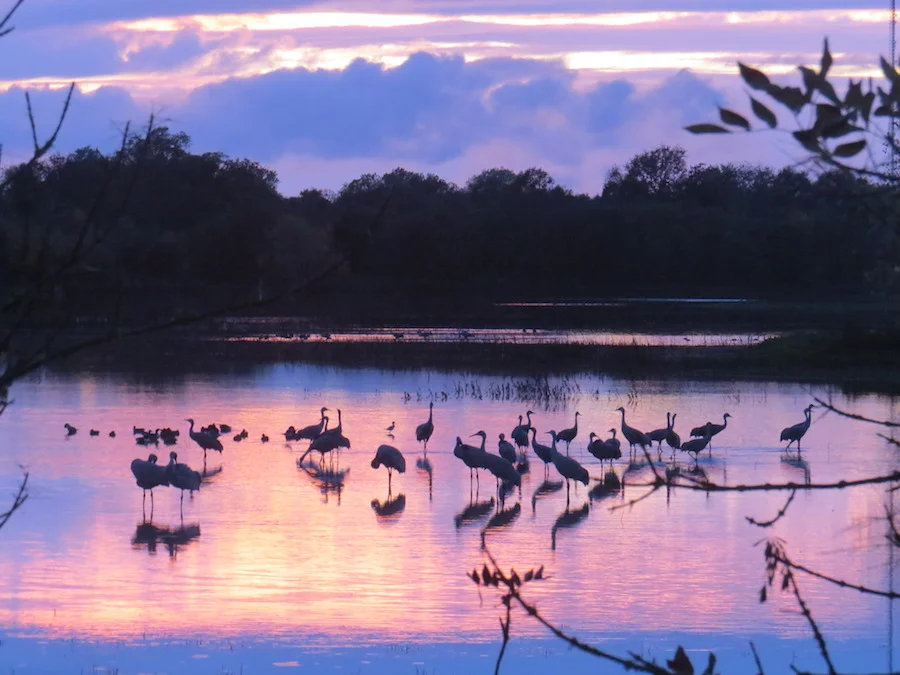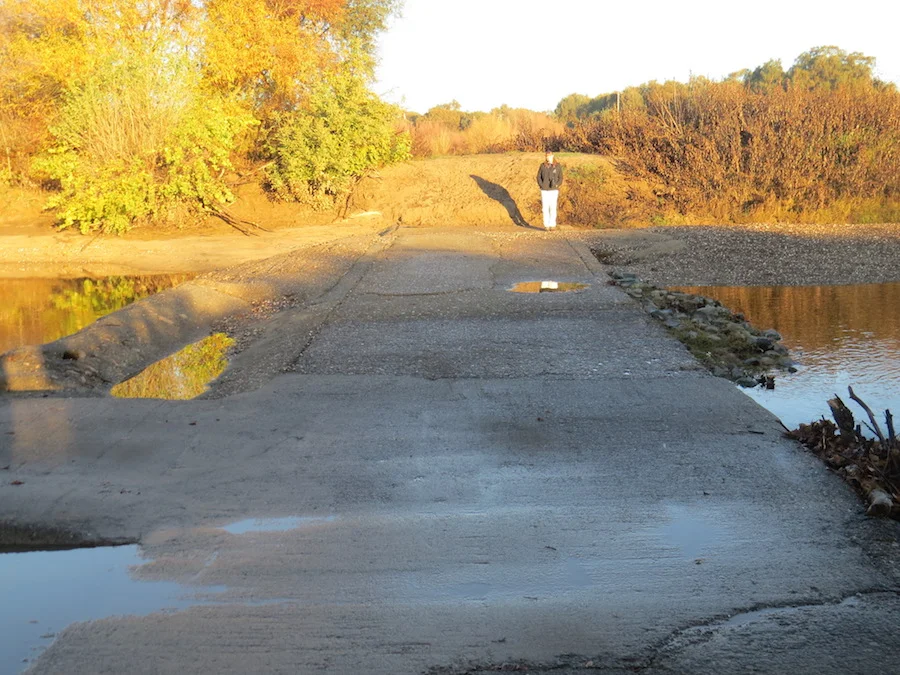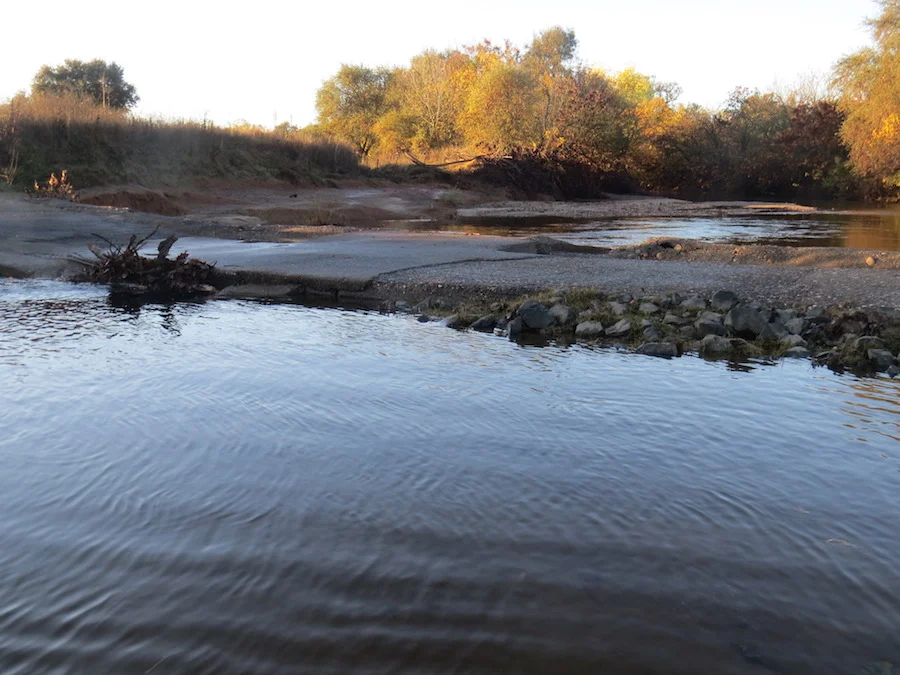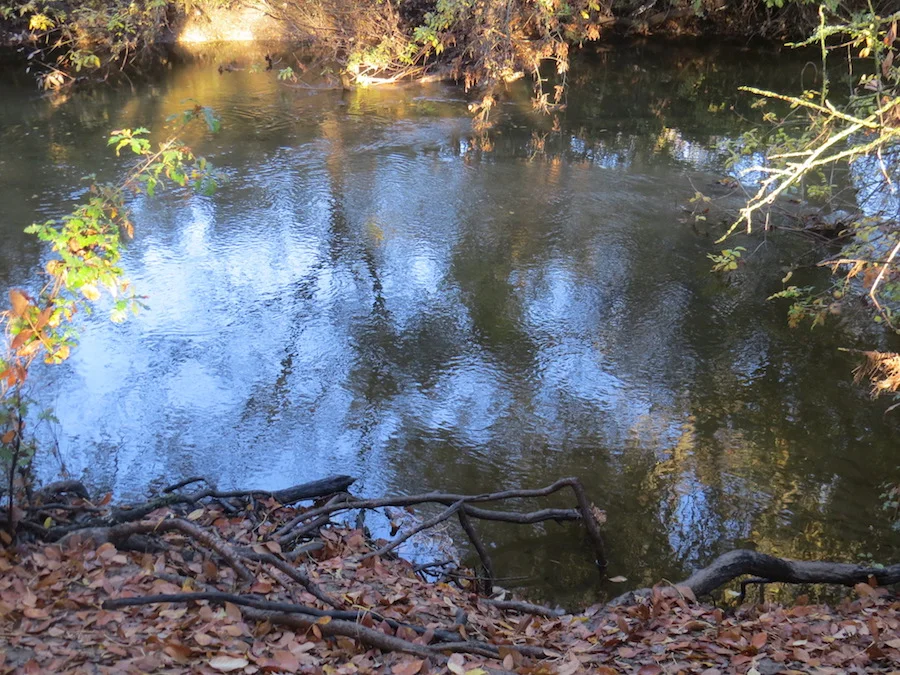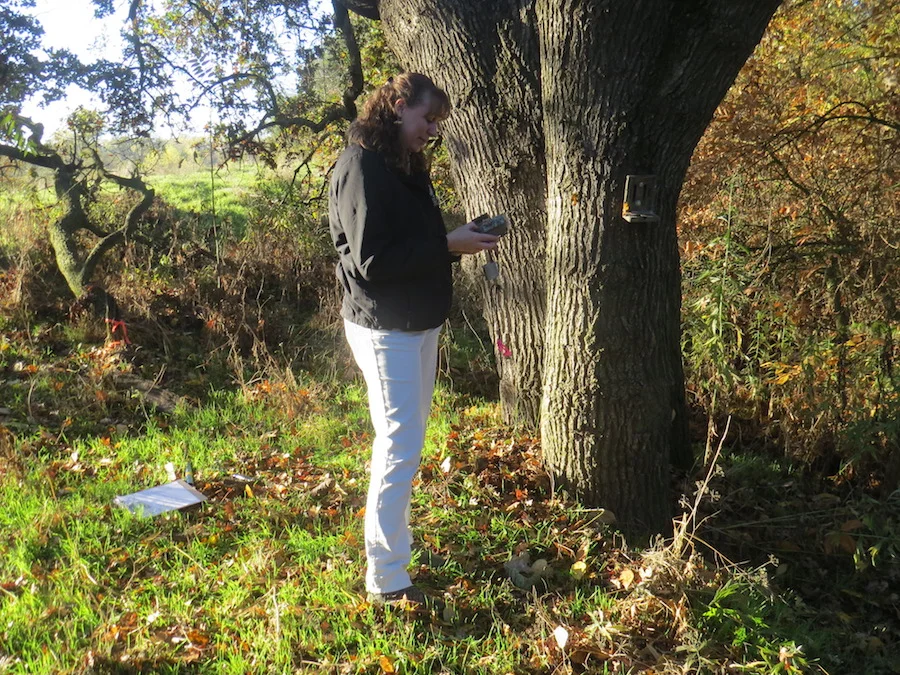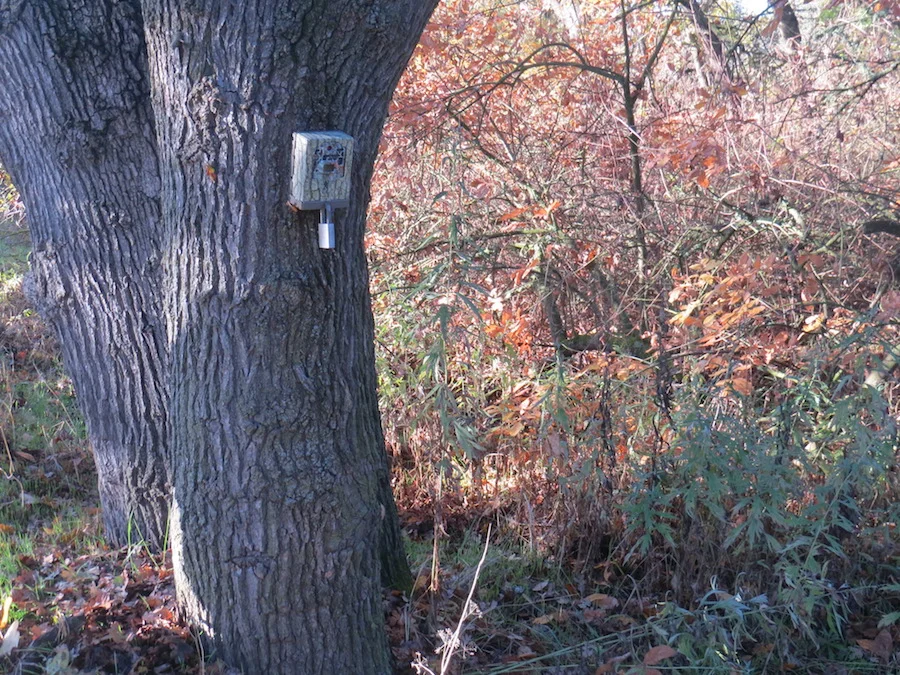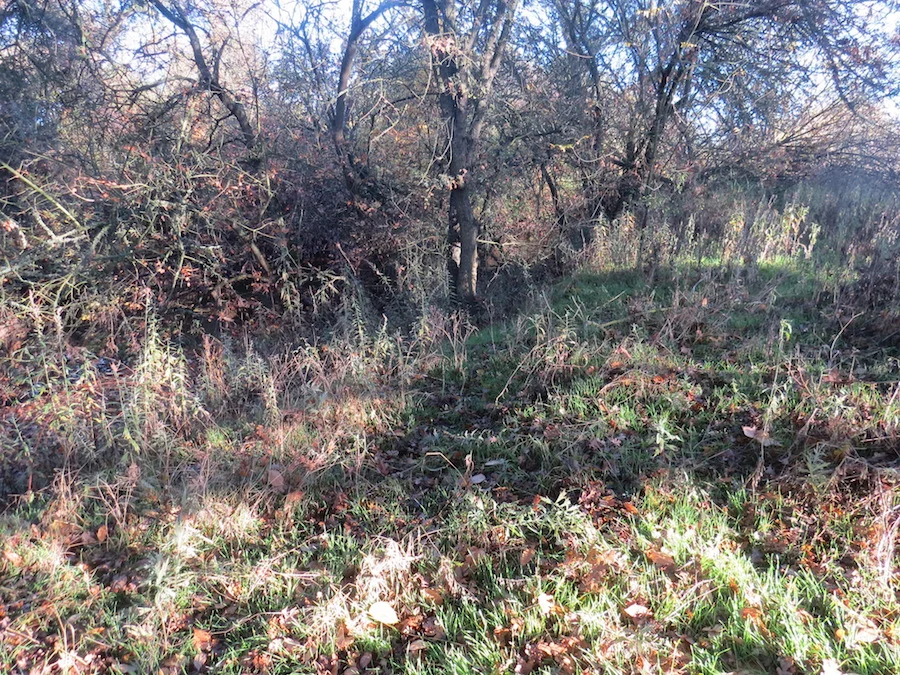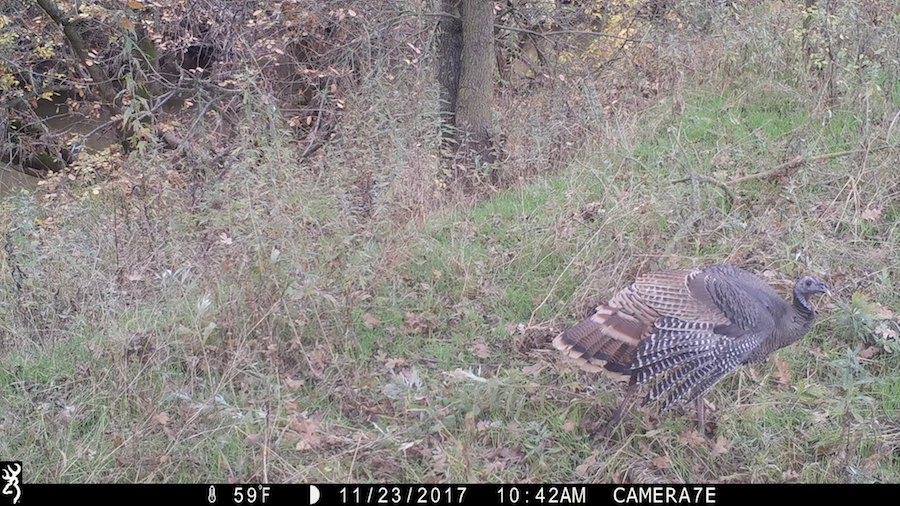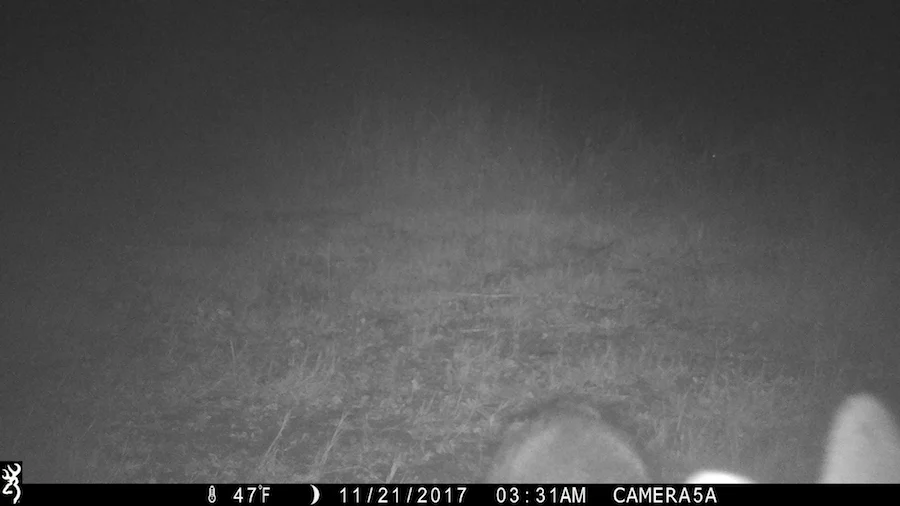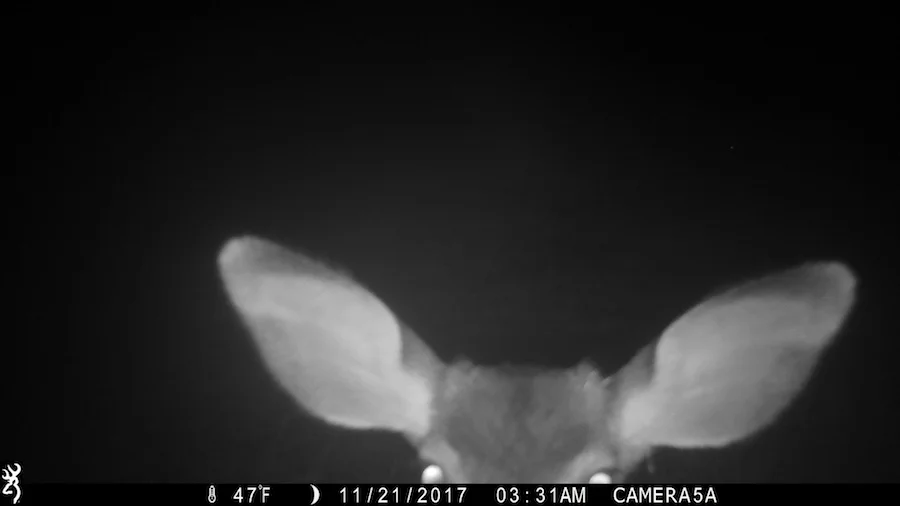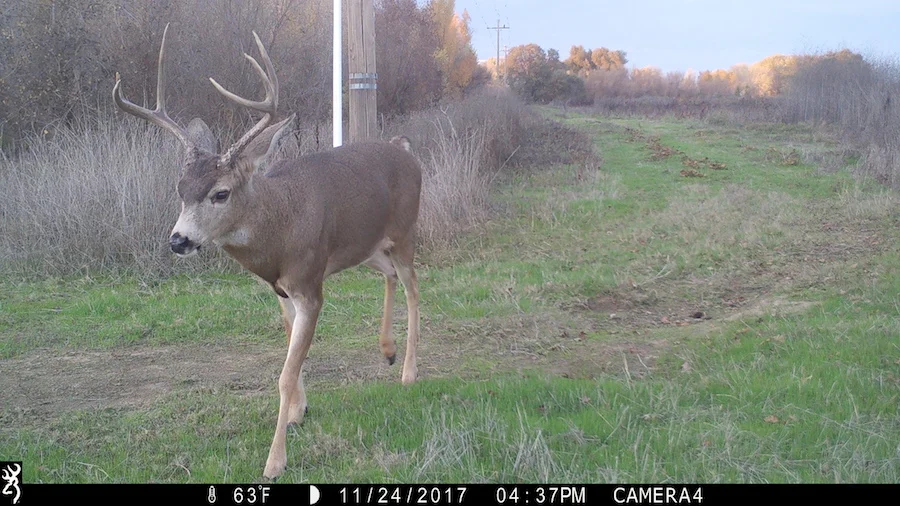Erin Hauge
Blog by Erin Hauge
We did not see a lion on the cameras today but we know they're out there. Our hard-working and excellent crew is in this for the long haul because everyone understands that sometimes it takes time to get the results you're looking for. And we know that it's just a matter of time before we capture an image of one of these intelligent and resourceful animals. We know there are lions on the Preserve at various times because we've had reputable and reliable sightings this year. We probably don't have a resident lion but dispersing young adults are likely heading our way as they work hard every day to find a place to call their own. Paws crossed that soon we'll meet one on camera!
The Sandhill cranes are finding refuge on the Preserve for the winter as the fields flood and the resulting ponds become rich with good foraging opportunities. Cranes are omnivorous and, in addition to fish, amphibians and aquatic invertebrates, they eat grains and seeds left from the year’s earlier agricultural harvests as well as snakes, insects, nestling birds, rodents, and tubers and berries. Cranes use their bill as a probe while they’re foraging for food on the surface and under shallow pond waters and on the levees and dry field areas near wetlands.
Cranes are known for their primordial, mournful trumpeting calls and you can hear them echo through the oak woodlands on the Preserve and across the open ponds. Those calls can be heard for up to two miles as family groups communicate and help to guide individuals in to roosting areas where other cranes are. Cranes have very long tracheas, or windpipes, that reach down into the sternum. This gives their calls a lower pitch with rich harmonics that can project over great distances. You may be watching a group of cranes in the ponds when suddenly one or more will begin to call out. Look to the sky and hark for incoming cranes calling as chances are pretty good that the group on the ground has heard the incoming fliers and is letting them know where they’re hanging out!
Cranes foraging and monitoring their surroundings. This image was taken from the car on the road and even so, you can see these individuals are giving us the 'eyeball!' It's important to give cranes their space and heed all boundary signs on the Preserve. Photo Courtesy of Chris Llewellyn
Sandhill cranes roost together in large family groups and this not only helps the youngsters with their social development, it gives the group protection against the many predators that are on the lookout for a crane feast. Young cranes that hatched in northern breeding grounds migrate south with their parents and are called colts. They continue to grow and mature here on the Preserve and practice their crane dancing skills that are used for courtship and also for defense against predators. Predators that can present a threat to injured, weak or inattentive cranes include coyotes, mountain lions, bobcats, foxes, raccoons, crows, owls and eagles. Cranes defend against aerial predators such as eagles by leaping and kicking with their feet. Terrestrial predators are discouraged by looking big and threatening, hissing and kicking.
There are Bald eagles on the Preserve and they're one of the predators that Sandhill cranes must watch out for. This individual was seen roosting in a Cottonwood tree on one of our camera routes. Cranes defend against aerial predators by leaping into the air and kicking at them with their long, strong legs. Photo Courtesy of Chris Llewellyn
Cranes are watchful and wary. It's important to always give them their space on the Preserve and be mindful of Preserve boundary signs, even when going for that photo op. Any time cranes go air borne because of disturbance or perceived threat on the ground, they're expending an incredible amount of hard-gotten energy that's needed to see them through the cold Valley winters and stay healthy and alert.
In the Field:
Today was sunny and cold as we headed out. No frost on the ground but it had rained pretty hard the day and night before so the roads were showing puddles and some mud. We were thinking about how the rain might affect mountain lion movement and behavior in terms of dispersal travel. It would depend on the individual and his or her experience and drive to disperse and probably also what kind of terrain they found themselves navigating in a storm. Would they feel compelled to keep moving in the rain? Would they find a dry spot and wait it out?
We were still able to drive to the cameras because the leaf cover on the ground is so thick that it provided a lot of traction. We’re looking at pulling a few of the farthest cameras closer in to more accessible walking distances but holding for now. With clear skies projected for the coming week, it may be that things will dry out enough for us to continue with cameras as they are for awhile. It will just depend on the weather!
Roads getting muddy after the rain. The heavy leaf litter provided lots of good traction so we were able to drive out to all the cameras except one today. Erin Hauge
The low flow dam was dry again but still showed signs of recent submersion. And it’s likely that yesterday’s good rain will bring more water down from the foothills and cover the dam again. The Preserve uses a flow gauge located in the foothills that gives the lower Preserve about 24 hours notice for increased flows that may present flooding so usually there’s a little time to prepare for access issues with things like the lion cameras.
The accessible crossing also means that wildlife is still able to use the low flow dam as a corridor to get back and forth from the more remote oak forests to the north over to the wetlands and slough areas farther south. Bobcats, coyotes and yes, mountain lions are still able, at this time, to move across the river using this dam and that is huge. When the low flow dam becomes covered in water for good for the season, wildlife will become aware of this and will have to adjust their travel patterns accordingly. The question of how wildlife, including lions, adjust and where they go when the water rises is a vastly important one that remains foremost in our minds as the rain falls.
Crew member Chris at the other side of the low flow dam today. Erin Hauge
Water has receded from last week but still remains close to the top of the low flow dam. Erin Hauge
You can see where the water rose to over the last two weeks and then receded before yesterday's rain. Note the animal tracks in the lower left of the photo! Erin Hauge
Since it’s still pretty early in the rain season, aquifers and dry landscapes are still absorbing much of the precipitation but that will change if it turns out we have another really wet winter.
We visited the first camera this morning and got another great view of how the river is rising. We stood at the same spot where we’d taken the second photo below of the Cosumnes River two weeks ago and it was easy then to still see the sandy river bottom and the tracks where animals had walked along the dry bed. Today, you can no longer see the bottom of the river and there’s a perceptible current!
Here's a photo of the river at the exact spot we stood at several weeks ago. You can't see the bottom now! Erin Hauge
The Cosumnes River at the same location as the image above, just two weeks ago! Erin Hauge
We tended to the camera and battery level was good. We let camera batteries run down to 25% before we change them to get best value. The cameras take 8 AA lithium batteries and when all conditions are 'go,' the batteries can last for up to four months or so. We had just over 250 images, which is a pretty good average for a week’s worth of camera captures.
One of the things we expect as the weather turns cold and wet is more spiders who like to take refuge behind the cameras in the casings! Our crew was not disappointed today! Each of us had stories to tell of spiders large and small popping out of the casings and camera covers as we opened the cameras up to retrieve SD cards. Spiders seem to find the casings particularly appealing shelter from the Preserve's winter weather. They're pretty harmless and I'm sure just as surprised to see us as we are them. They always just jump off and go about their way but they definitely get our attention!
Crew member Chris tending one of our cameras. Erin Hauge
This camera is located on a levee just above the Cosumnes River and overlooks some active game trails. The rain has greened everything up and this camera may require some vegetation trimming of the low grasses and weeds in the coming weeks.
Here's our camera, mounted on a large oak tree and padlocked into its casing. Erin Hauge
Here's the view the above camera gets. You can see the game trail moving right down the middle of the photo here and there's also a pathway from left to right here, moving across the levee and down towards the river on the left. Erin Hauge
It turned out that most of those 250 or so images were turkeys! No doubt giving thanks for living through another Thanksgiving feast without being on the table!
Thankful turkey! This is the same camera view as the photo just above it. Note how different times of day and sun or clouds can greatly affect the lighting and clarity of images. The photo above this one is from the same camera angle and was taken at about 8:30AM on a sunny day. Photo Courtesy of Bureau of Land Management
We saw lots of great tracks back near the low flow dam, including coyote and great blue heron! And we found some very large scat, likely coyote.
The right foot track of a Great blue heron. Note how the back toe extends offset from the middle point of the three front toes. This is an identifier for GBH tracks. Possibly a raccoon or otter track on the left side of the heron track. Which animal came by first? Erin Hauge
Coyote track in the sandy substrate by the low flow dam. Erin Hauge
Coyote scat. Twisty, hairy and soft and collapsible when squeezed. Lion or bobcat scat would be clearly segmented with blunt ends, have a felt-like quality when broken open and be very hard when squeezed. Erin Hauge
There’s a healthy coyote pack family currently running on the route covered by this camera. The scat pictured above is hairy, twisty and loose and collapsible when you squeeze it, qualities of coyote scat. Coyotes can’t digest hair the way lions and bobcats can so you actually see animal hair strands twined in the scat. And instead of straight, defined fecal segments with blunt ends, the way you’d see in a cat scat, these segments are twisty and end in points. Cat scat is solid when you squeeze it and breaks apart to a felt-like quality inside because cats have evolved to do a better job of digesting all the hair they consume with prey.
Learning scats and tracks takes perseverance, repetition of knowledge and lots of practice with 'dirt time!' And even then, sometimes you’re just making a best guess based on the information you have. Regardless, keep your eyes open and your awareness on the dirt as well as the landscape around you – think details plus ‘big picture!’
Meet the Crew
Our amazing crew is out in the field looking for mountain lions and other wildlife rain or shine!
Meet Kristin Harrisberger, Cosumnes River Preserve Volunteer Naturalist, Citizen Scientist and Grounds Supervisor at the Sacramento Zoo.
Crew member Kristin Harrisberger and crew member-in-training Rosemary!
We asked Kristin What do you like best about being on the mountain lion camera crew?
"My favorite part of working on the mountain lion project has to be the crew. I love being able to get out and enjoy the beauty of nature with like minded individuals. We each have different background but share the same goal. I have been inspired by each member of the crew to continue forward with out search. I look forward to my daughter growing up and being able to eventually volunteer as well. It’s essential for our youth to understand and respect nature... and I know that she'll find it at the Preserve."
The Sacramento Zoo has generously given a grant to the Mountain Lion Foundation that is currently supplying some trail cameras to the Cosumnes River Preserve for the mountain lion project.
Mystery Photos!
Here are three 'mystery' photos from this week's cameras! Take a look and before you peek at the answers, take your best guess as to what's going on in the photos!
Mystery photo 1. Hmmmm, looks like a tawny back. What about those ears? Photo Courtesy of Bureau of Land Management
Mystery photo 2. What the...? Looks like small rounded ears and a pretty rounded abdomen area. What do you think? Photo Courtesy of Bureau of Land Management
Mystery photo 3. Whatever it is, it's big! Photo Courtesy of Bureau of Land Management
We get photos every week that give us a double take for a variety of reasons. We look to the image sequences and time/date stamps to help us sort it out. And we have the support of BLM biologists and knowledgeable trackers to help us consider options when we just aren't sure. Okay, take your best guess and look below for the answers!
Mystery photo 1. A curious doe checking out the infrared flash on the camera! As we've seen on the cameras, some does will startle at the flash and appear frightened and uncertain. This girl is taking on the challenge of finding out just what is making that flashing red light! Photo Courtesy of the Bureau of Land Management
Mystery photo 2. A raccoon! Camera angles and lighting can make some species appear like others and only with confirmation from other images in the sequence is it easy to discern who it is. Also, note that we can make the identification with a partial picture of the animal because of the raccoon's distinctive ringed tail and the high curve of the back. Photo Courtesy of Bureau of Land Management
Mystery photo 3. A buck! The full series of images shows him approaching the camera and checking it out closely. Maybe he was hoping it would make a good antler rub! Bucks this time of year mark territory and find relief as they shed velvet by rubbing their antlers on trees and even scraping them in the dirt. Eventually, this buck will drop his rack and sprout a new one in the spring. Photo Courtesy of Bureau of Land Management
Be sure to check in next week as we continue our search for a Mountain lion on the Preserve!
Critter Camera Captures
The next three images are an exciting sequence of a buck chasing a doe. Both the doe and the buck look like they're running hard on the chase. We don't know how it ended but this is the season for lots of mating competition and pursuit! Photo Courtesy of Bureau of Land Management
Note the running gait of the doe. Photo Courtesy of Bureau of Land Management
The same running gait as the buck pursues. Note that the buck is holding his head lower on his frame than the doe. Can you guess why? Photo Courtesy of Bureau of Land Management
Coyote! This is a great example of how animals evolve in many ways to blend in to their surroundings. Note how this coyote's coat is so close in color to the surrounding habitat. The coloration on his head and face are lighter, making that part of him easier to see in this image. Photo Courtesy of Bureau of Land Management
Deer and turkey! See the turkeys checking out the deer as he walks by. (The deer has spike antlers, likely a yearling.) Photo Courtesy of Bureau of Land Management
Look at the reach on this raccoon and how small and nimble his or her hand is reaching for the branch. Some interesting insect or vegetation may be spotted. Raccoons are notorious opportunists who can access things that require deft digits - a good reason to never leave dog or cat food in feeders outside!
Bobcat on the move. Note how this one is walking on the outside track of the road, at the farthest range from the camera's infrared flash. This may be a bobcat who passes the location regularly and has learned to step along the outside there in the darkest area of the flash zone. His or her coat markings can be a clue as to whether this cat is a regular! Photo Courtesy of Bureau of Land Management
Erin Hauge has been a volunteer naturalist at the Cosumnes River Preserve since 2014. She enjoys staffing the Visitor Center and interacting with the many visitors who stop at the Preserve to learn about the area and take in its quiet waterways, scenic landscapes and accessible hiking trails. She joined the Mountain Lion Camera Project in 2014, then under the direction of the Bureau of Land Management and the Department of Fish and Wildlife. In 2015, the project went to all volunteer capacity. Erin became the team leader, and currently directs a committed and exceptional crew on the continuing mission to capture a mountain lion on a Preserve trail camera with valuable oversight and support from the Bureau of Land Management. Erin is a Certified California Naturalist and is currently earning certification as a Field Ecologist.
Resources:
https://www.allaboutbirds.org/guide/sandhill_crane/lifehistory#
